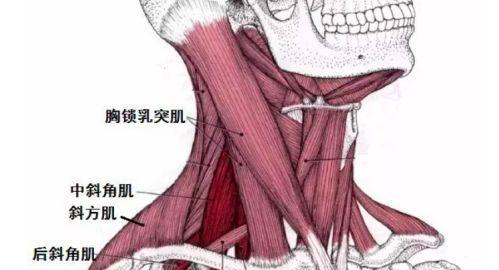What are the reasons why Baby Kiss Cream shares baby torticollis?
To know why there is a torticollis, we must first know how the neck can not be oblique, that is, why the neck can be erect. The neck can stand up, to meet:
First of all, the cervical spine is normal, can not be high on one side and low on the other, but to be able to prop up the neck straight;
Secondly, the sternocleidomastoid muscle (the main role) and the angle muscle are symmetrical, and the strength on both sides of the neck is consistent, so as to maintain the midpoint of the neck.

The picture above shows the sternocleidomastoid muscles and catemorous muscles (3) on the right side of the neck, and normally, the muscles are symmetrical left and right, ensuring that the neck is upright.
Third, the tissue structure around the neck is normal, and there is no tumor that compresses the muscle or inflammation causes contractures or pain in one side of the muscle, resulting in the neck leaning towards one side.
Therefore, if there is a problem with one of the above three points, a torticollis will appear:
●Congenital (prenatal injury or perinatal injury, but may be discovered after birth): congenital cervical vertebrae problems, such as the fusion of unilateral atlantoax vertebrae, resulting in high and low on one side; congenital side without sternocleidomastoid muscle, chestclidomastoid muscle spasm on one side, cervical webbing on one side, etc., can lead to torticollia. The most common congenital cause is spasm of the sternocleidomastoid muscle. This spasm can occur intrauterinely or be injured during birth.
●Acquired (torticollis that occurs gradually after birth, mostly after 6 months of birth): All acquired factors that cause the above skeletal and muscular abnormalities are acquired, such as neck fractures, osteomyelitis, neck inflammation leading to muscle contractures, dystonia, soft tissue tumors, etc. The most common acquired is inflammation of the sternocleidomastoid muscles and trapezius muscles (the outer layer of the back of the neck, prone to injury and inflammation).
Among the causes of torticollis, the common ones are congenital and the acquired ones are rare.